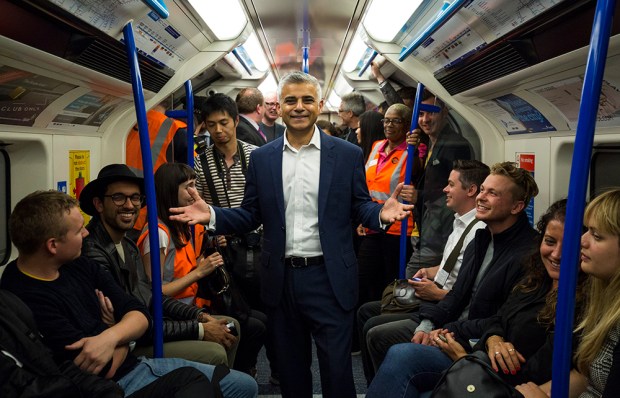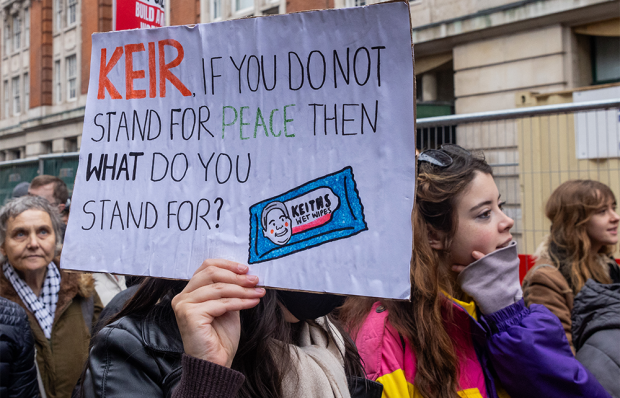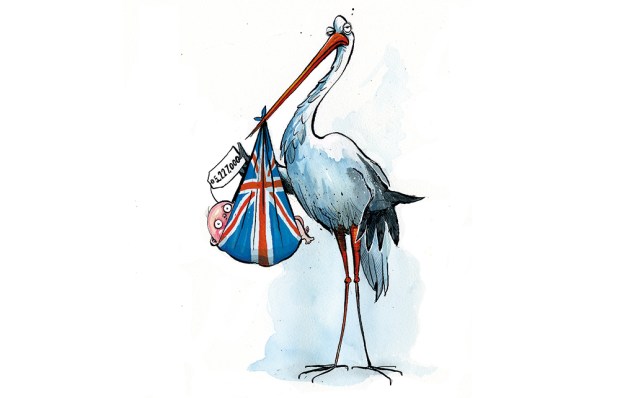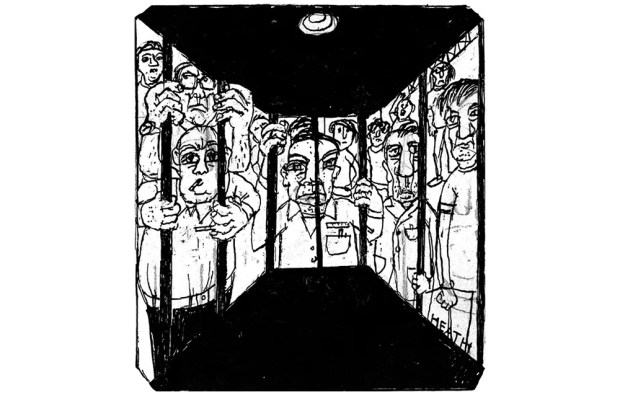To understand the political journey of Sir Keir Starmer, look to Liz Kendall. This week the Blairite and one-time leadership contender was put in charge of Labour’s welfare reform policy. Her promotion has upset the party’s left-wingers, who already think Starmer is too right-wing on welfare. ‘She’ll be more hard-line than Jonathan Ashworth,’ says one shadow minister in reference to her predecessor. But her real influence started well before she was given a place at Starmer’s shadow cabinet table.
Kendall’s role in the 2015 contest was to speak hard truths following the party’s defeat under Ed Miliband. As Jeremy Corbyn called for a ‘wide debate’ and Andy Burnham wooed the unions, Kendall defended Harriet Harman, then acting leader, when she said she would not oppose some government welfare cuts, including the cap on household benefit income. Kendall told her party to ditch the ‘fantasy’ that the British electorate had moved to the left and said she would not prioritise reducing university fees. In the end, her party wasn’t ready to hear her message. A rival campaign accused her of being part of the ‘Taliban New Labour’ and she won just 4.5 per cent of the membership vote.
Her campaign director at the time was Morgan McSweeney, who is now Starmer’s most influential aide, shaping campaign priorities and enforcing message discipline ahead of next year’s election. The Liz-for-leader press operation was aided by Matthew Doyle, former press adviser to Tony Blair, who is now Starmer’s director of communications. All three learnt first-hand the difficulty of doing too much, too soon. The return of Kendall to the front bench shows that a New Labour restoration, one that has taken time and patience, has entered its final stages.
Starmer has been waiting years to assemble a front bench that he believes is election-ready. He won the leadership in the spring of 2020 by appealing to the Labour left through Corbyn-style pledges (which he soon abandoned). He used footage of himself embracing his predecessor in his campaign video. His first shadow cabinet was dominated by the soft left, such as his shadow chancellor Anneliese Dodds.
In the three years since, Starmer has taken control of the party machinery. Corbyn has been expelled and his supporters have been sacked. Hard-left candidates have been blocked from standing. Now that Labour is 20 points ahead in the polls and bookmakers give the party a 90 per cent chance of winning the next election, Starmer is free to do what he likes.
The reshuffle is the latest and clearest statement of intent. There are now six around the shadow cabinet table who served in New Labour governments, three of whom were in the cabinet alongside Blair and Brown. Pat McFadden – a former Blair staffer who boasts to businesses that he was the first shadow minister to be sacked under Corbyn – is the election co-ordinator. Hilary Benn, who was secretary of state for international development under Blair, is in the Northern Ireland brief. Even those who were demoted – such as his former leadership rival Lisa Nandy – or axed put on a brave face. ‘It shows that Labour senses it’s about to win,’ says a seasoned party figure.
McFadden will work on the election campaign, but Brownites are also getting in on the action. Jonathan Ashworth, who was moved to make way for Kendall, is the new paymaster general, a job name even he admits is ‘one of those titles that you have to have constitutionally but that probably doesn’t really involve any paymastering any more’. However, it’s not an entirely pointless position. Starmer is acutely aware that, after 13 years in opposition, Whitehall experience is an area in which his party is lacking. Ashworth will be reunited with Sue Gray – Starmer’s new chief of staff – with whom he last worked when Labour was in government. ‘It’s what Francis Maude did for the Tories,’ says a Labour figure. ‘Getting the party ready for government.’
There are those to the right of Starmer who think that one shadow cabinet member is still too radical: Ed Miliband, who remains in place as shadow energy secretary. ‘The most left-wing politician remaining is Ed,’ says a figure sympathetic to Corbyn. ‘It’s slim pickings. Even Angela Rayner is relatively right-wing.’
Miliband has a decent working relationship with Starmer and his supporters in the Commons argue that the party needs him to stop certain people from voting Green. He’s also a former cabinet member, and Starmer has few of those. ‘We don’t always see eye to eye with him on policy but he brings so much experience and knowledge,’ explains a party figure. Any reservations about Yvette Cooper have been put aside for the same reason, not that this will stop others from dwelling on old grievances. ‘There are certain people in the Labour party who want to relive the battles of the past 20 years,’ sighs one party figure. ‘They need to move on.’
As the old Labour tribe returns, Blair himself has bought a manor near Chequers and is offering himself as an unofficial adviser. Staff at his institute are likely candidates for future special adviser roles.
It’s unclear what, if anything, this really means for policy. If Starmer is the next prime minister, he will inherit a much more difficult economic situation than Blair did in 1997. Already shadow treasury types are talking about ‘spending money more wisely’ as they contend with their plan not to scare voters with tax rises. Starmer plans to play it safe in the run-up to the election, avoiding anything or anyone that could be used by the Tories to suggest the party is radical or scary.
However, Tory strategists are dubious about whether the electorate really has an appetite for reheated Blairism. They hope that if 61-year-old Starmer can be portrayed as stuck in the Blairite past, Rishi Sunak, 43, could be (to use a New Labour term) the change-maker. ‘The only way we are going to win is change,’ says a senior Tory. For that to work, Sunak needs to come up with a plan to make a dramatic break with his own party’s past.
Got something to add? Join the discussion and comment below.
Get 10 issues for just $10
Subscribe to The Spectator Australia today for the next 10 magazine issues, plus full online access, for just $10.
You might disagree with half of it, but you’ll enjoy reading all of it. Try your first month for free, then just $2 a week for the remainder of your first year.















Comments
Don't miss out
Join the conversation with other Spectator Australia readers. Subscribe to leave a comment.
SUBSCRIBEAlready a subscriber? Log in